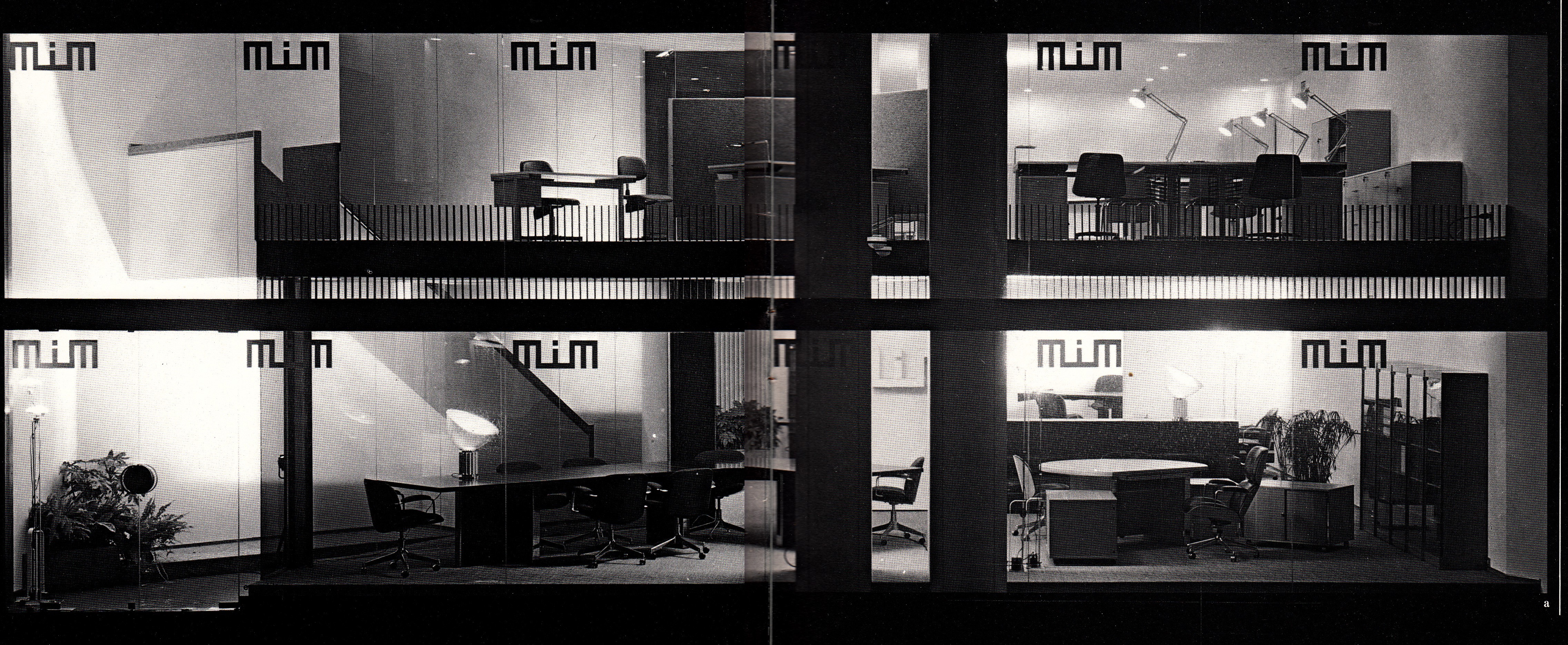The story of the MIM now seeks a new “pen” to continue writing its greatness. As is well known, history is a partial understanding of a whole, resulting from the predominance of information over a series of gaps, voids, and episodes in the shadows. Among the gaps in the history of Italian design, particularly in Roman events, MIM (Modern Italian Furniture) represented a surprising case due to its excellence and the scant attention given so far.
In 1957, Ennio Fazioli launched a business for designing, building, and selling home and office furniture that, in a few years, became a reference point for design and culture in Rome, expanding nationwide. The MIM production found home in an elegant store opened on Largo dei Lombardi the following year. The key figures involved in this venture were Ico Parisi, the company’s artistic director, his wife Luisa, and other individuals selected by Parisi, including Giò Ponti and Bruno Munari. The furniture arrangement on the store’s two floors was enhanced with works by artists such as Novelli and Fontana. Parisi’s experience and his autonomy of thought, outside the conventional professional schemes of architecture, initiated a job and business plan that, beyond innovating furniture production, aimed to develop a new design concept combined with the arts, creating a different relationship between architecture and visual arts.

The challenge was to design and produce modern furniture by blending functionality and Italian taste while maintaining active ancient construction traditions. The company’s philosophy is rooted in the belief that working in furniture is a way to contribute to the community’s well-being and advancement. The company promotes experimentation and high quality in technologies and materials and involves architects, professionals, the MIM’s technical office, and workers in the design process. The production, characterized by the use of fine woods, includes successful pieces such as those designed by Parisi (among others, the Limonta round table, the Urio modular living room system with iron uprights, the Lerici bookcase, all in wood with detachable elements), Renato Venturi’s chair, and Renato Zammerini’s armchairs.
In 1959, Munari created the logo that would distinguish the industry’s activities, which were already expanding with stores in Naples and Bologna. The involvement of Leonardo Sinisgalli, with whom Ennio Fazioli came into contact in 1962, marked a significant phase for the company in realizing dissemination programs aimed at architects, professionals, and an educated bourgeois public. These initiatives, starting from themes related to production, expanded to general and current cultural topics based on the belief that entrepreneurial activity could not exclude direct participation in an educational and transformative societal process. Besides initiatives of particular interest in architecture and publishing, such as organizing exhibitions and publishing MIM’s notebooks (one of them celebrated Bruno Munari), the cultural promotion project found its leading realization in the publication of the magazine founded and directed by Sinisgalli “La botte e il violino. Repertorio di design e di disegno” from 1964 to 1966. In this publication, which continued Sinisgalli’s previous experiences with the magazines “Pirelli” and “Civiltà delle Macchine,” literary, artistic, architectural, critical, and theoretical themes, cultural chronicle, and history intersected and confronted each other to promote a new aesthetic in line with the evolution of modernity and techno-industrial culture.

The aim, already in the choice of the title, was to avoid abstract schemes and programs by drawing attention to the transversal and not always evident cultural aspects of culture as a whole; the themes of the investigation were “man and home, man and the city, man and his habitat.” In “Furor Mathematicus,” Sinisgalli wrote, “A good cabinetmaker never uses nails. In a violin, in a barrel, there are no nails. The essence of furniture is that of the violin and the barrel.“The magazine, presented with a particularly refined editorial appearance, counted among its collaborators Argan, Battisti, Menna, Praz, Assunto, and the younger Portoghesi and Fagiolo. It also hosted articles and advertisements for MIM, and it documented collaborations with Carlo Scarpa and Vittorio Gregotti for chair prototypes by illustrating new productions such as the Parioli office chair or the Farnese wardrobe, for which the painter Franco Gentilini served as a testimonial. The unique blend of manufacturing, communication, and cultural promotion was showcased in the second edition of 1964, featuring members of Gruppo ‘63 seated on the Vignola chair. The chair, designed by Luigi Pellegrin, is made of a reinforced plastic shell with fiberglass. The title “Roman avant-garde in an armchair” referred to a triple accordion-folded page with portraits of Balestrini, Pagliarani, Guglielmi, Giuliani, Rosselli, Lombardi, Perilli, Novelli, and Vasio, sitting on the highly modular Vignola chair.

The new MIM store in Piazza Augusto Imperatore, designed in 1964 by Luigi Pellegrin, who had been part of the collaborating architect’s team since the 1960s, became, thanks to Sinisgalli, a gathering point for architects, artists, writers, critics, and intellectuals. Figures such as Zevi, Portoghesi, Ungaretti, De Libero, Gentilini, Capogrossi, Perilli, Campigli, André Bloc, Argan, Bucarelli, and others met there for book presentations, conferences, and exhibitions. From the mid-1960s, MIM opened a branch in Milan, then in other Italian cities, and lately in Brussels; it considerably expanded its activity by acquiring two new plants, one for wood in Sacile, Friuli, and the other for metalworking in Turin. Production was oriented towards office furniture, maintaining the habit of collaborations with architects and designers, including Zanuso, Mendini, and Sottsass. In the Milan and Rome stores, in 1982, on the occasion of the presentation of the Eulero furniture system by Studio Alchimia, Alessandro Mendini created the “Sentimental Robot” exhibition. The MIM Rome plant closed in 1985, and production continued at the Sacile factory.
The history of MIM ended in 2000 when Ennio Fazioli decided to halt production and interrupted his great adventure of art and design after more than 40 years. Today, the MIM brand, along with all the projects that made its history, has been officially put up for sale by its founder.

